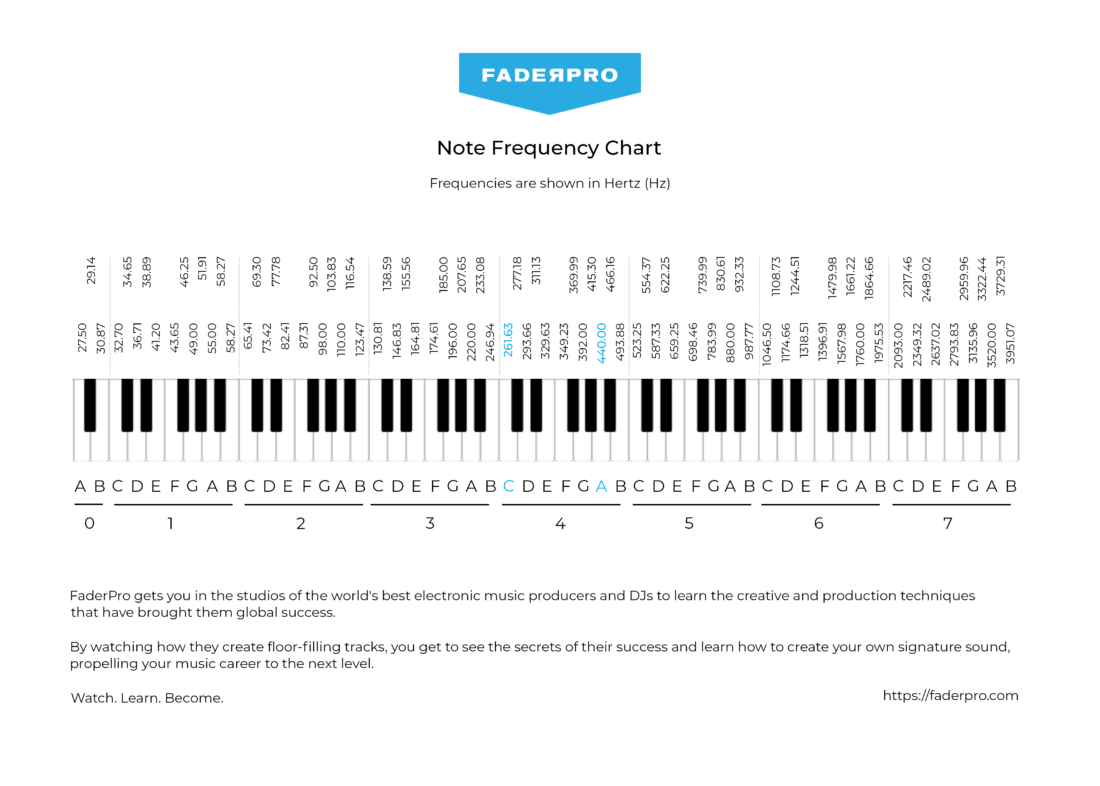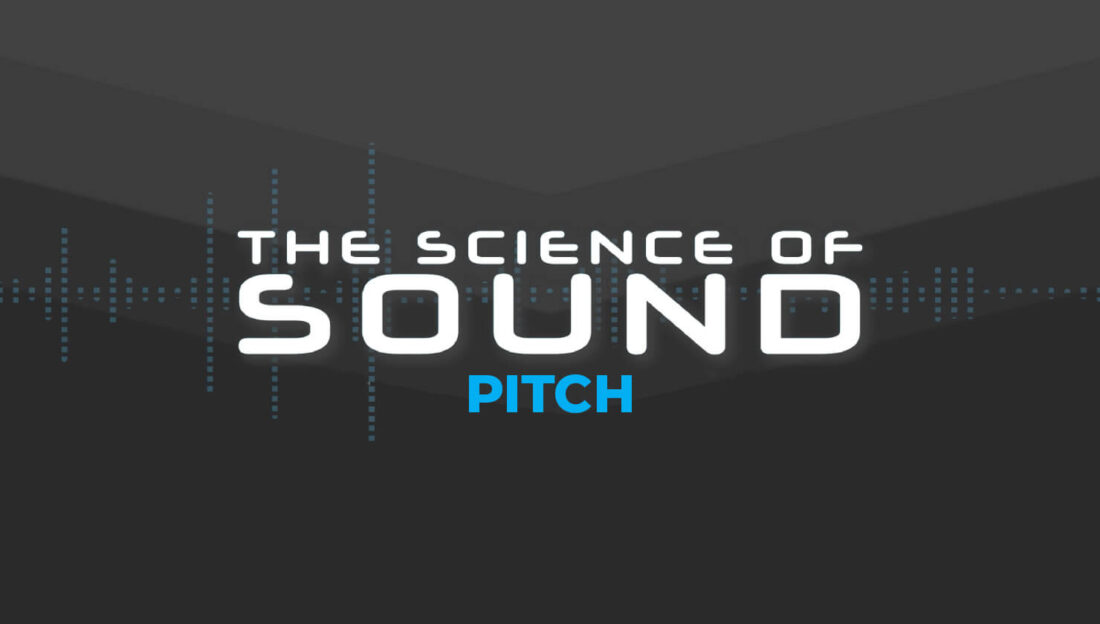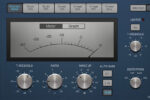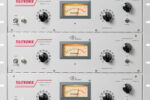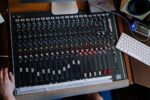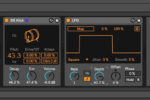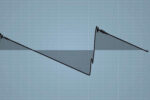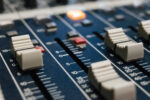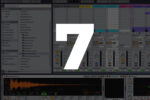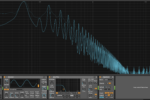Interactive note frequency chart
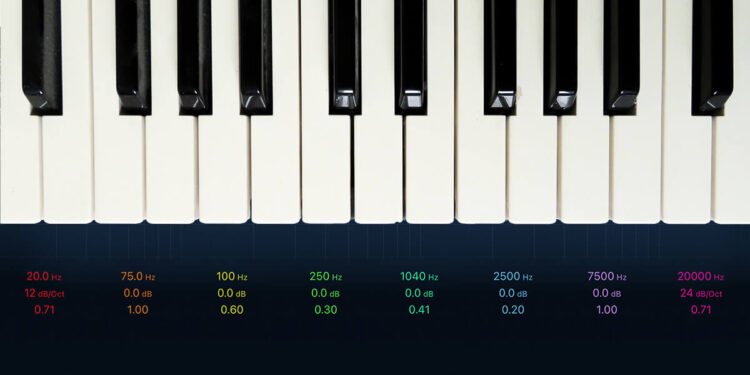
What is a note frequency chart?
A note frequency chart is a table of information that shows which audio frequency corresponds to a named note (the 12 notes A to G in a Western musical scale) across a range of octaves. Understanding a note frequency chart is useful for all music producers and can help during the process of mixing in order to quickly focus in on certain frequency issues.
First of all, let’s make sure we all understand what frequency is all about.
Frequency, when it relates to audio (where it’s also referred to as ‘pitch’), is a measure of how fast a sound wave repeats every second. The faster the repetition, the higher the frequency (and therefore pitch). The slower the repetition, the lower the frequency. The standard measure of frequency is Hertz.
So, let’s take a look at the chart (the figures shown below are in Hertz). And if you want to hear what those frequencies sound like, click the ‘Enable sound’ button below and then click a frequency to hear it!
| NOTE | OCT 0 | OCT 1 | OCT 2 | OCT 3 | OCT 4 | OCT 5 | OCT 6 | OCT 7 | OCT 8 |
|---|---|---|---|---|---|---|---|---|---|
| C | 16.35 | 32.70 | 65.41 | 130.81 | 261.63 | 523.25 | 1046.50 | 2093.00 | 4186.01 |
| C#/Db | 17.32 | 34.65 | 69.30 | 138.59 | 277.18 | 554.37 | 1108.73 | 2217.46 | 4434.92 |
| D | 18.35 | 36.71 | 73.42 | 146.83 | 293.66 | 587.33 | 1174.66 | 2349.32 | 4698.63 |
| D#/Eb | 19.45 | 38.89 | 77.78 | 155.56 | 311.13 | 622.25 | 1244.51 | 2489.02 | 4978.03 |
| E | 20.60 | 41.20 | 82.41 | 164.81 | 329.63 | 659.25 | 1318.51 | 2637.02 | 5274.04 |
| F | 21.83 | 43.65 | 87.31 | 174.61 | 349.23 | 698.46 | 1396.91 | 2793.83 | 5587.65 |
| F#/Gb | 23.12 | 46.25 | 92.50 | 185.00 | 369.99 | 739.99 | 1479.98 | 2959.96 | 5919.91 |
| G | 24.50 | 49.00 | 98.00 | 196.00 | 392.00 | 783.99 | 1567.98 | 3135.96 | 6271.93 |
| G#/Ab | 25.96 | 51.91 | 103.83 | 207.65 | 415.30 | 830.61 | 1661.22 | 3322.44 | 6644.88 |
| A | 27.50 | 55.00 | 110.00 | 220.00 | 440.00 | 880.00 | 1760.00 | 3520.00 | 7040.00 |
| A#/Bb | 29.14 | 58.27 | 116.54 | 233.08 | 466.16 | 932.33 | 1864.66 | 3729.31 | 7458.62 |
| B | 30.87 | 58.27 | 123.47 | 246.94 | 493.88 | 987.77 | 1975.53 | 3951.07 | 7902.13 |
You may notice there’s a strong relationship between the octaves for any given note – easiest to spot when you’re looking at ‘A’. As you’ll see, for each increase in octave, the frequency doubles. This is repeated for all notes in the scale (although it’s a little more tricky to spot the pattern!).
Why should I care about note frequencies?
Here’s why frequencies matter, when it comes to music production.
Fundamental frequency
Every sound (except white noise) contains a fundamental frequency, which equates to its core, inherent pitch. On top of that fundamental frequency, each sound contains a cocktail of harmonics – a unique sonic fingerprint – which gives each sound a unique character. But that fundamental frequency is crucial, as it’s the dominant frequency – and therefore pitch – of any sound.
If your track is in C major, you almost certainly wouldn’t want your baseline to play a C# (eg 69.30 Hz) the whole way through your track. That bass note will sound out of tune and provide a ‘clash’ against the other sounds in your production.
Tuning percussive elements
The same thing is true if it just so happens that the Kick drum in your track has a fundamental frequency which equates to a C#. If that low end thump is out of tune with the rest of your track – even though Kick drums have a less obvious ‘pitch’ than a piano, for example – your track won’t sound ‘locked’ to a key. If you’re not sure of the tuning of a Kick, or Snare, you can either use the frequency analyser within an EQ plug-in to discover the fundamental frequency, or you can do it by ear.
It often helps to dramatically transpose percussion elements up by a few octaves, so you can hear their pitch at a higher pitch range, where our ears are better calibrated to detect pitch. Then, use some basic maths to tune those elements back down.
Let’s suppose you transpose your Kick up by 36 semitones (3 octaves) to discover its dominant pitch is an A. Your track is in C, so transpose it up another 3 semitones (to +39) and then drop it by 36 to get it back into the right octave. That means it’ll end up being transposed by +3 semitones.
Do I need to tune every element?
Not every single element in a production needs to be tuned to the fundamental frequency. If your analog snare drum is tuned to the 5th of the scale (a G, if your track is in C major/minor), that will sound great too. The benefits of tuning drums and percussion elements to more obviously pitched elements can be subtle or dramatic. But either way, your productions will benefit.
How do frequencies map to a keyboard?
It’s useful to be able to visualize frequencies mapped across a traditional piano keyboard. So, you’ll see a graphic below that’ll show you exactly which frequency corresponds to which note on the keyboard. Click the image to download our note frequency chart to print out and keep handy in your studio?
What’s special about 440Hz?
You might have spotted in the note frequency chart above that A4 has a frequency of 440Hz. This is an internationally recognised standard for Western music. There’s much debate over whether 432Hz is a ‘better’ frequency (some studies have even shown that music tuned to this frequency has medical benefits). We’re not going to get into that debate here, but if you’re interested to find out more about the difference between these tuning standards, this video is a good watch.
Want to learn more about pitch?
Learn everything you need to know and more about pitch in music production with Jono Buchanan, and discover the variety of ways you can affect it to create inspiring sounds and hone your mixes. Whether you’re looking to detune a synth oscillator to create subtle stereo width, tune a drum sound to make it work in your mix, or use pitch-shifting plugins on a vocal; you’ll find everything you need to know in this course.
